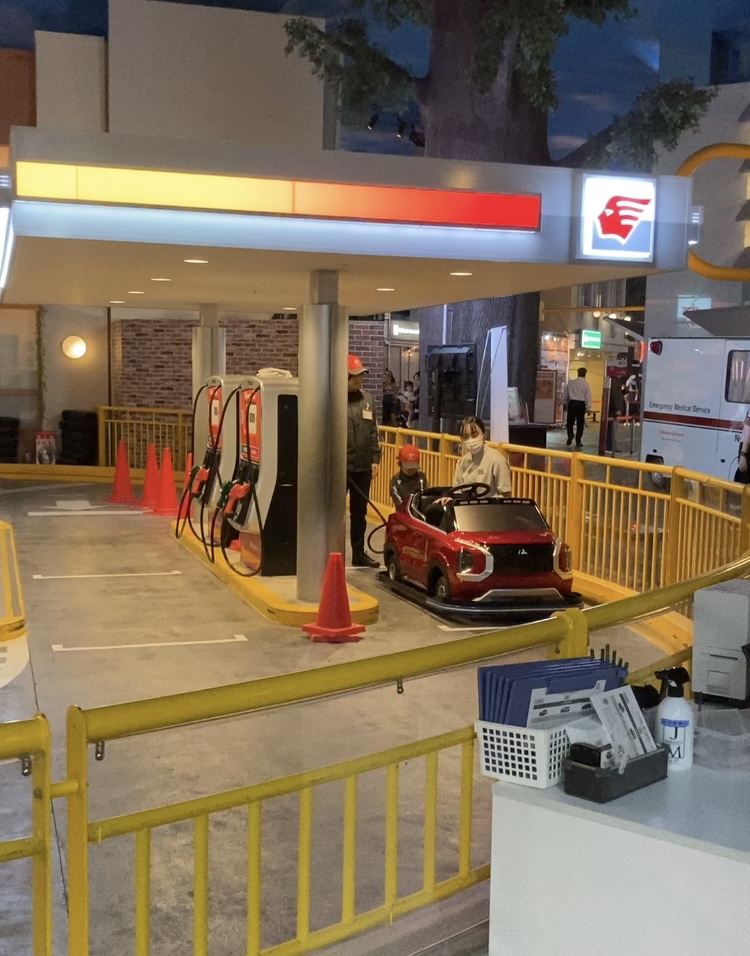
English Wednesday at KidZania Tokyo – Review & Impressions
KidZania Tokyo is well-known as a place where children can try out real-life jobs in a fun, hands-on way. It’s a popular destination for families looking to combine learning with play.
But did you know that KidZania Tokyo offers a special experience called English Wednesday? On Wednesdays, around half of the pavilions are operated in English, giving children the chance to engage in role-play activities while hearing and using the language.
I recently visited KidZania Tokyo with my child on an English Wednesday, and in this post, I’ll share what I observed. From how well-prepared the staff are, to whether the experience feels inclusive for international families—I’ll walk you through it all based on our visit.
Let’s dive in and explore whether English Wednesday is worth checking out, whether you’re raising a bilingual child or simply hoping to encourage more real-life use of English.
Disclosure: This article includes sponsored content. I only feature products and services I genuinely recommend, especially those related to kids’ learning, parenting, and global communication.
Your Child Might Be Overwhelmed If They’re Not Familiar With KidZania

KidZania is packed with exciting things for kids to do. On a typical visit, even on a busy day, most kids can try out 4–5 different jobs. If the park’s less crowded, they might squeeze in 7 or more. And it’s not just about the jobs—there’s a whole mini city to explore.
Kids can open their own bank account, use an ATM to deposit or withdraw KidZos (KidZania’s currency), hop on a sightseeing bus, shop at the department store, or even take on a part-time job. There’s also mealtime to think about, bathroom breaks, and just getting around the park—it’s a lot to take in, both for children and their parents.
If your child speaks English at home or attends an international school, the regular Japanese-language days might feel a bit overwhelming.
With so many instructions and interactions happening in Japanese, it can be hard for English-speaking kids to fully enjoy the experience. In that case, English Wednesday could be a great way to help them feel more at ease and confident as they explore the park.
On our visit, we saw many international families taking part, and the overall atmosphere felt much more inclusive and globally-minded.
Job experiences are usually done without parental supervision, which can feel a little intimidating for younger kids or first-time visitors, even if they’re generally confident. So, if there are some English guidance added to this experience, it would be a big support to relax your kids in this environment.
Takeaway:
・English-speaking kids may feel more comfortable on English Wednesday, especially if they’re new to KidZania.
💡If you don’t mind opening a book in Japanese, I recommend getting the latest KidZaia Tokyo Complete Guide to prepare with your child and decide on pavilion priorities together.
Note: Pavilion availability changes often. I accidentally relied on an outdated guide, and my son was disappointed that his favorite was gone!
English Staff Vary in Hospitality
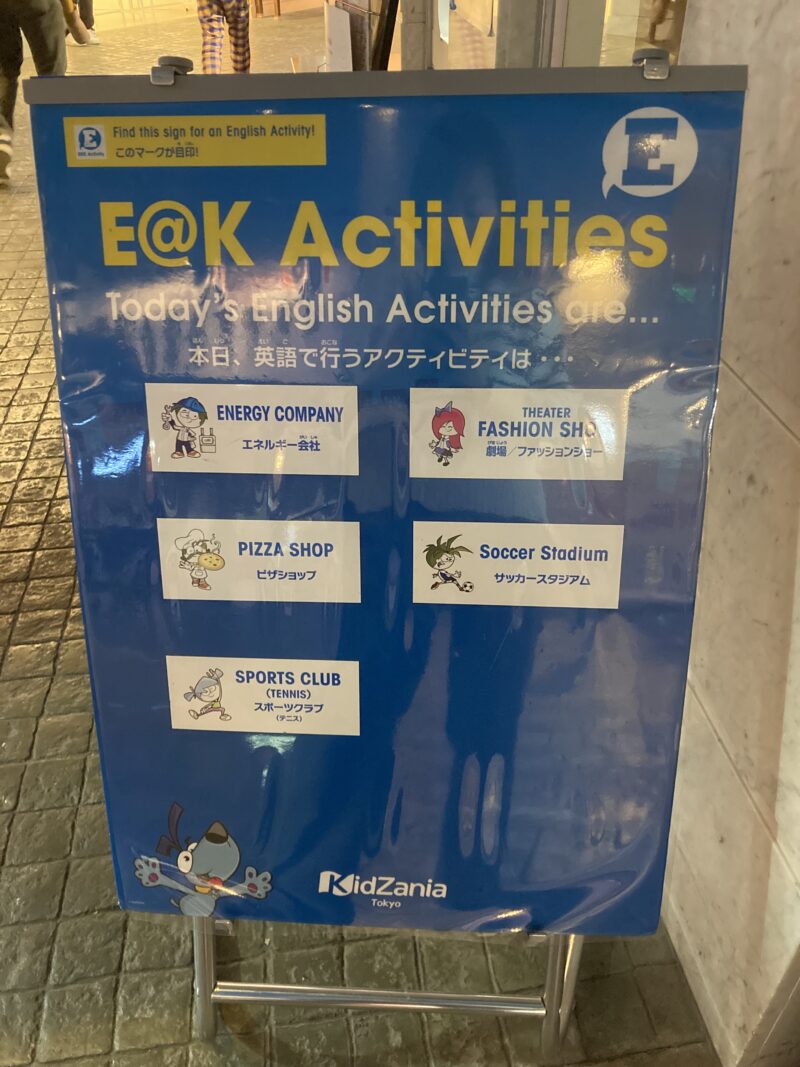
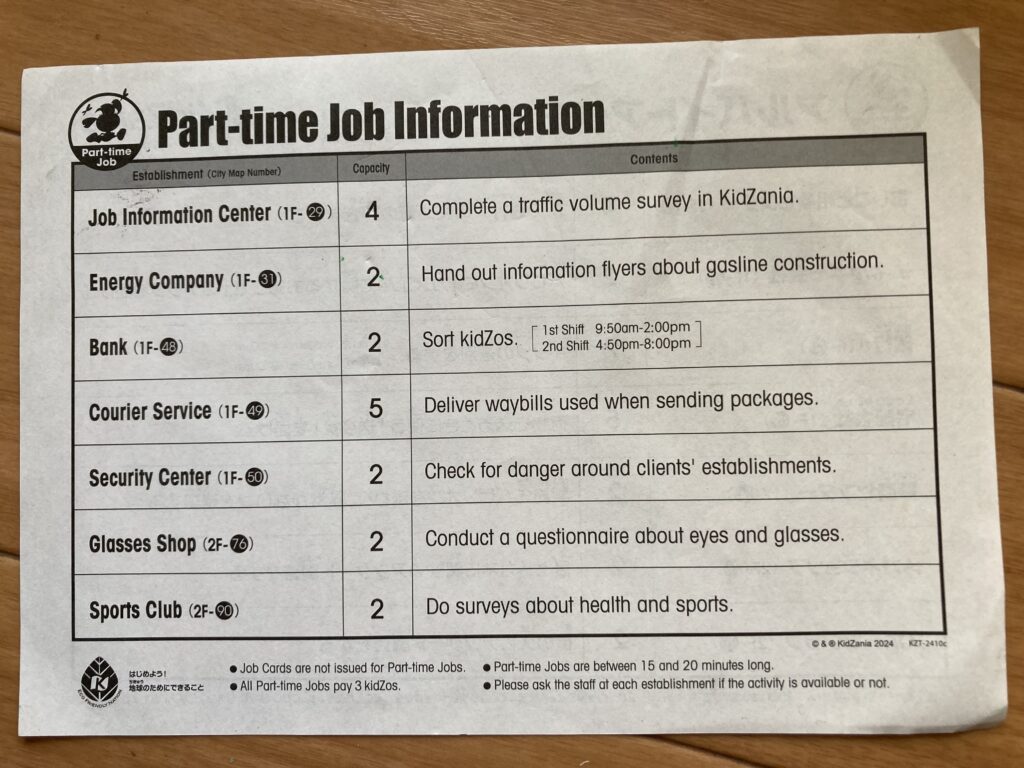
KidZania staff are often praised for their hospitality, and generally, it’s a very supportive environment for children.
However, when it came to the English-speaking staff, I noticed the hospitality wasn’t always consistent. Some seemed less engaged, or even impatient when interacting with children.
Takeaway:
- Staff hospitality levels vary—even among native English speakers.
Still, It’s a Great Chance for Cross-Cultural Learning
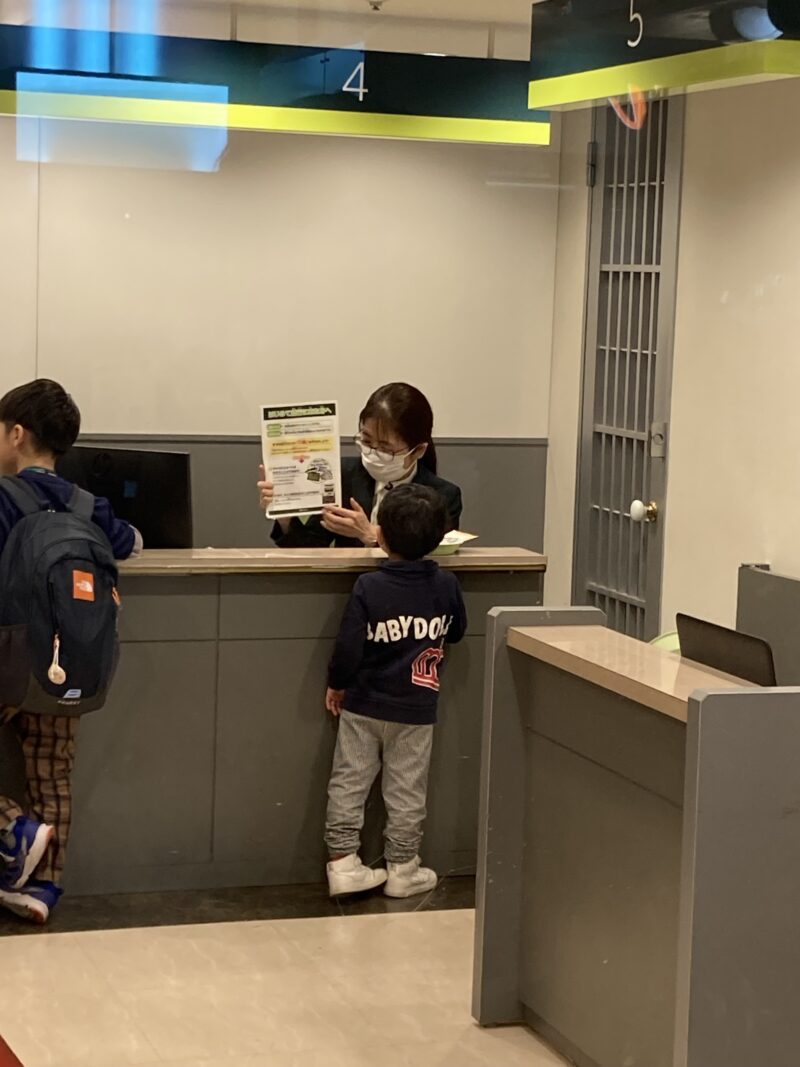
Despite the challenges, English Wednesday attracts a more international crowd. You’ll notice a higher number of foreign families and children, making it a valuable cross-cultural experience.
It’s a chance to meet kids from different ethnicities, cultures, and religions. Kids will also learn how to communicate even when they don’t share the same language—through gestures, facial expressions, and visual aids.
Watching how KidZania staff support non-Japanese guests is also an eye-opener, and a great model for inclusive communication.
Takeaway:
- English Wednesday is an amazing opportunity for multicultural exposure.
- Kids learn non-verbal communication and cultural empathy.
Going over the available pavilions with your child in advance is recommended
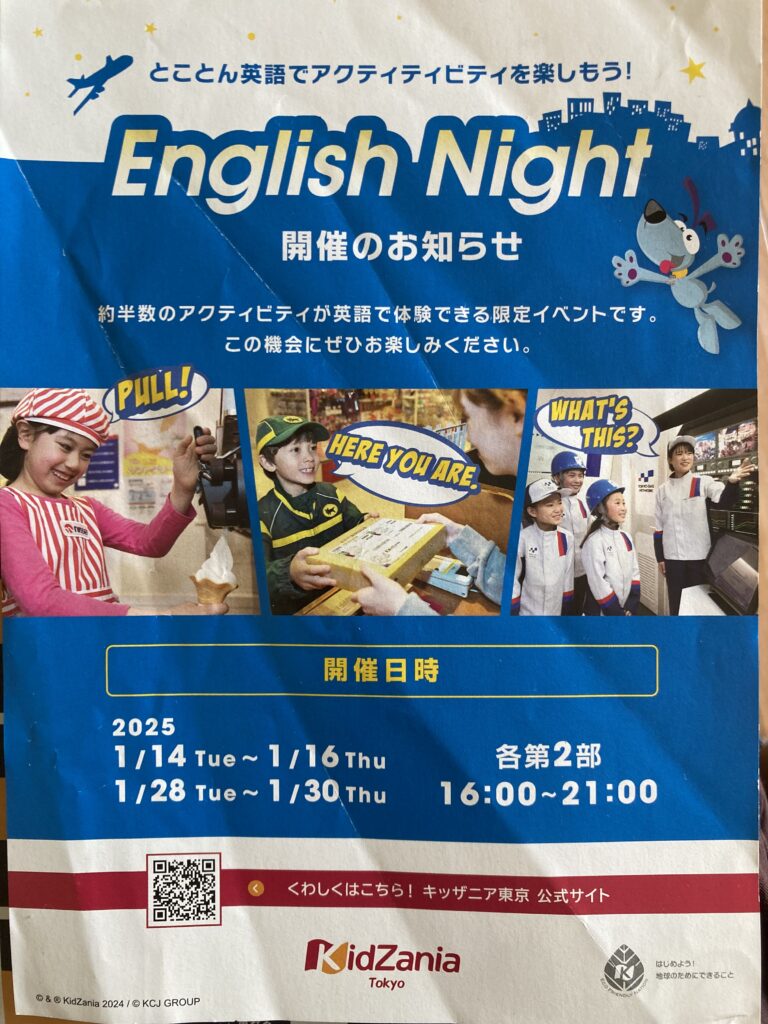
Before heading to KidZania, I highly recommend checking out which pavilions are available and going over them with your child! There are so many options, and chances are you won’t be able to try them all in one day. That’s why it helps to set some priorities together—like deciding on the top two or three must-do jobs in advance.
It’s also a great opportunity to build a little planning habit. For example, you can say, “Let’s go to bed early tonight so we can wake up on time and get to KidZania when it opens!” Talking through the day like this helps kids feel more prepared and makes the experience smoother and more enjoyable for everyone.
📘 If you’re planning a visit, definitely check out the KidZania Tokyo Complete Guide.(Japanese only)
Note: Pavilion availability changes often. I accidentally relied on an outdated guide, and my son was disappointed that his favorite was gone!
You can find the Japanese article introducing Kidzania Tokyo English Wednesday here.
Looking for a interpreter or guide in Tokyo? I offer personalized support for families and travelers.
As a Tokyo-based mom of two with professional interpreting experience, I understand the needs of visitors—especially those traveling with children!
Contact me through the [inquiry form], and let’s make your trip smooth and enjoyable!
Final Thoughts: Does Kidzania’s English Wednesday Worth It?
So, is English Wednesday a good fit for kids learning English? Here’s my honest conclusion:
- There are so many fun activities – it can be too much for first-timers
- To avoid overwhelming kids with international backgrounds, English Wednesday is strongly recommended
- Staff quality varies
- But it’s an excellent cross-cultural opportunity, and it also helps to cultivate planning skills for your child
Want to discover more indoor playgrounds and theme parks in Tokyo? Click here for our full guide!
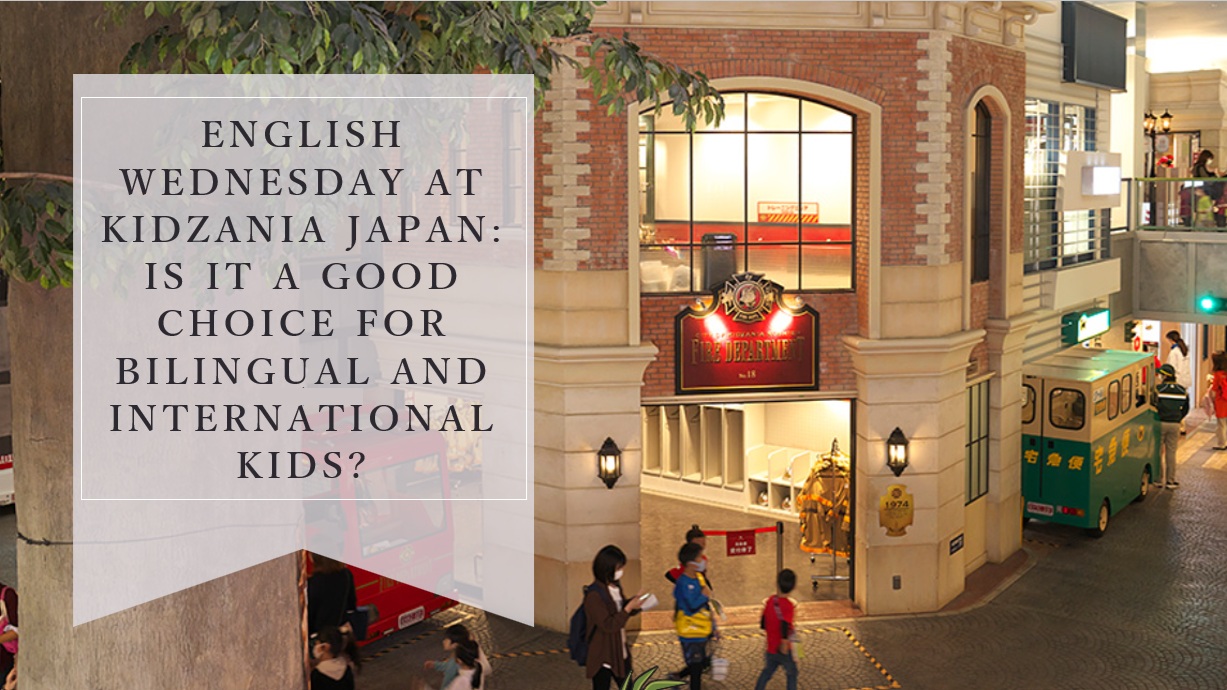


コメント